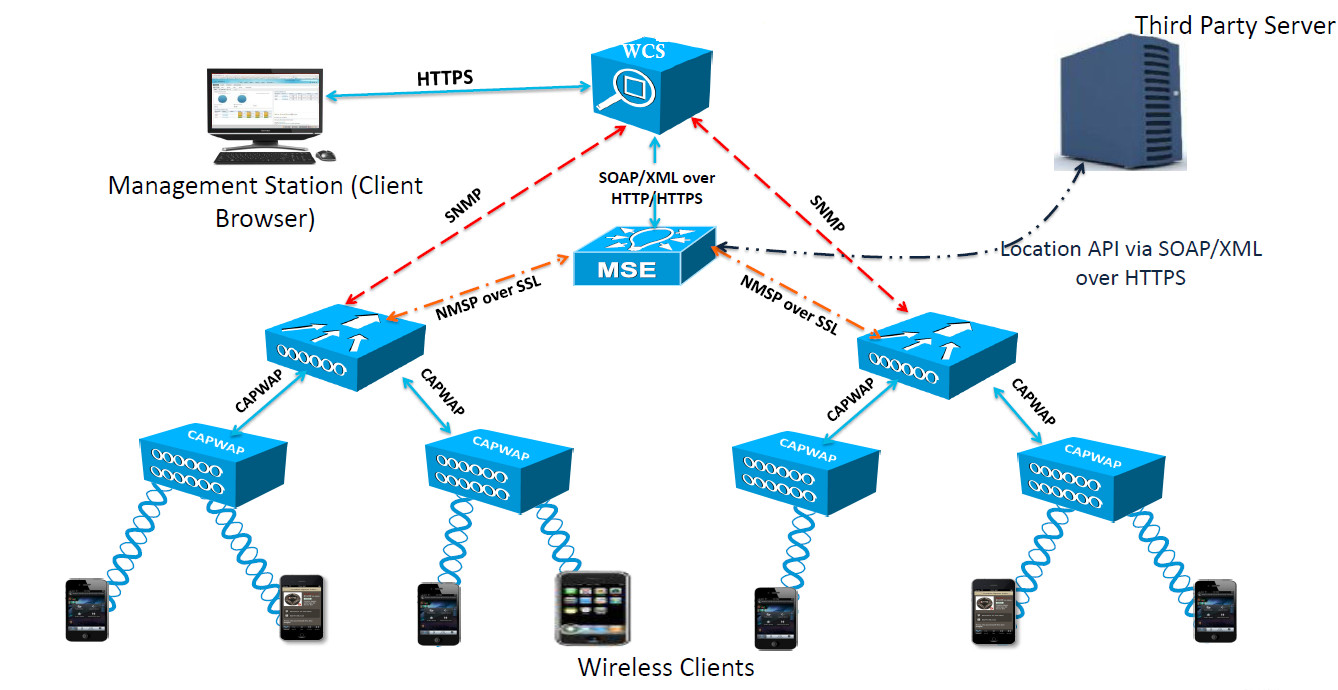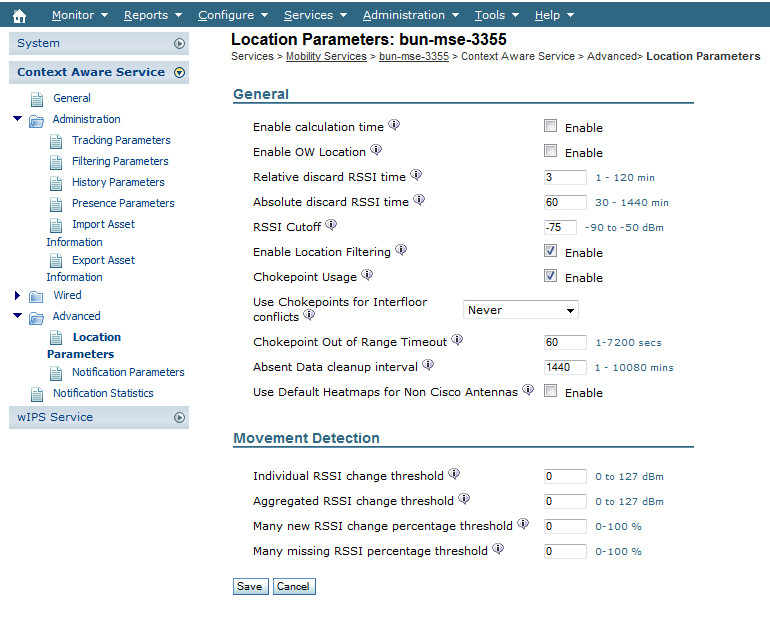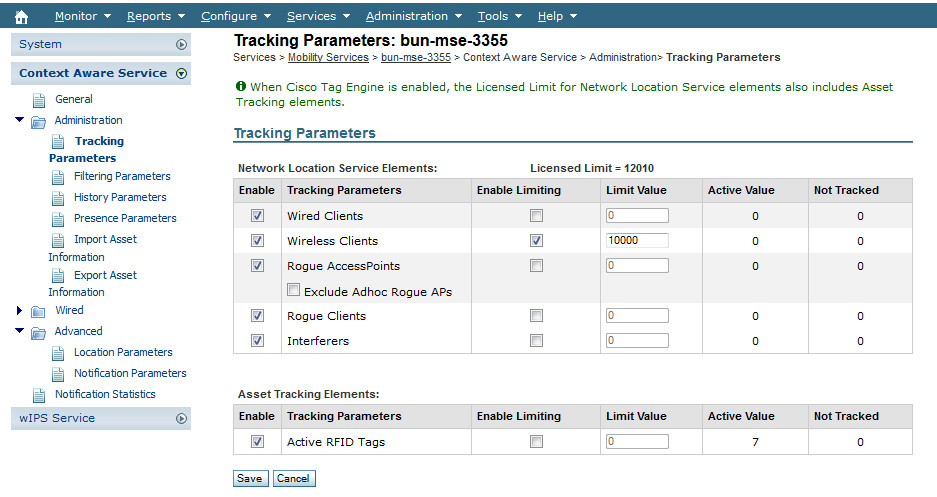The Cisco Mobility Services Engine (MSE) is a pivotal component in modern wireless network infrastructure, offering two core services that significantly amplify network intelligence and security. These services are Context Aware Services (CAS) and Adaptive Wireless Intrusion Prevention System (wIPS). Let’s delve into each of these functionalities and understand how they contribute to a robust and insightful wireless network environment.
Context Aware Services (CAS) within the mobility services engine empower network administrators with the ability to precisely track the physical location of network devices. This encompasses both wired and wireless devices connected through Wireless LAN Controllers (WLCs) and Cisco Aironet Lightweight Access Points (LAPs). The solution provides comprehensive visibility, enabling the tracking of a wide array of Wi-Fi devices, including client devices, active RFID tags, and even rogue clients and access points (APs) that might pose security risks. This location tracking capability is invaluable for asset management, security monitoring, and optimizing user experiences within a defined space.
 Network Diagram Illustrating MSE, WLC, and WCS Interaction
Network Diagram Illustrating MSE, WLC, and WCS Interaction
The Adaptive Wireless Intrusion Prevention System (wIPS) is the second primary service offered by the mobility services engine. This software suite is designed to provide robust visibility and comprehensive threat prevention across the mobility network. It achieves this through continuous monitoring, intelligent alerting, threat classification, and automated remediation of both wireless and wired network vulnerabilities. By proactively identifying and mitigating potential security threats, wIPS ensures a secure and reliable wireless environment, safeguarding sensitive data and maintaining network integrity.
Communication between the various components of the system relies on a set of well-defined protocols, ensuring seamless operation and data exchange. These protocols include:
-
Control and Provisioning of Wireless Access Points (CAPWAP): Serving as the evolved successor to LWAPP, CAPWAP is the foundational protocol for communication between access points and controllers. It facilitates the efficient management and configuration of wireless access points within the network.
-
Network Mobility Services Protocol (NMSP): This protocol is crucial for communication between wireless controllers and the mobility services engine itself. In the context of a wIPS deployment, NMSP provides a secure and encrypted pathway for alarm information to be aggregated from controllers and efficiently forwarded to the mobility services engine. Furthermore, it facilitates the distribution of wIPS configuration information from the mobility services engine back to the controllers. NMSP utilizes TCP Port 16113 for controller communication.
-
Simple Object Access Protocol (SOAP/XML): SOAP/XML is the chosen method for communication between the mobility services engine and the Wireless Control System (WCS). This protocol is specifically employed to distribute configuration parameters to the wIPS service operating on the mobility services engine. Communication via SOAP/XML occurs through MSE TCP Port 443.
-
Simple Network Management Protocol (SNMP): SNMP plays a vital role in forwarding wIPS alarm information from the mobility services engine to the WCS. Additionally, it is utilized to relay rogue access point information from the controller to the WCS, providing a centralized view of network security events.
For a comprehensive list of all protocols and ports utilized within the MSE-WLC-WCS architecture, the Cisco document “Cisco Unified Wireless Network Protocol and Port Matrix” (Document ID 113344) offers an exhaustive reference.
Within Context Aware Services (CAS), several configurable settings allow for fine-tuning the location tracking capabilities to meet specific deployment needs. Historical data retention is a key aspect, enabling administrators to define which parameters are recorded and for how long this historical information is preserved within the mobility services engine.
Administrators can customize location-specific parameters within the WCS interface under “Services -> Mobility Services -> Context Aware Services -> Location Parameters”. This section allows for adjustments to how devices are tracked and managed. For instance, a device is marked as “inactive” if it remains inactive for a continuous hour. If inactivity persists for 24 hours (defined by the “Absent Data Cleanup Interval”), the device is removed from the active tracking table. However, the historical data for that device remains within the MSE for a default period of 30 days.
 WCS Interface Showing Context Aware Services Location Parameters
WCS Interface Showing Context Aware Services Location Parameters
The RSSI Cutoff value is a critical parameter that requires careful tuning for optimal performance in different environments. This setting defines the minimum Received Signal Strength Indication (RSSI) value that the mobility services engine will consider when calculating the location of a tracked element. Crucially, this RSSI Cutoff is applicable only to client tracking and does not affect the tracking of RFID tags.
Setting an excessively high RSSI Cutoff, such as -60 dBm or -50 dBm, particularly in scenarios with low access point density, can lead to inaccurate location calculations. This is because the MSE might inadvertently exclude RSSI values from reliably “hearing” access points, thus limiting the data available for triangulation.
Conversely, employing a very low RSSI Cutoff, like -85 dBm or -90 dBm, in open spaces or environments with minimal wall attenuation, such as inter-floor areas, can also degrade location accuracy. In such cases, the MSE might incorporate RSSI values from distant, less relevant access points in its calculations, leading to imprecise location estimations.
Further customization of tracking parameters is available, allowing administrators to tailor the system’s behavior to specific operational requirements.
 WCS Interface Displaying Tracking Parameter Values
WCS Interface Displaying Tracking Parameter Values
For integration with third-party systems, the mobility services engine offers Northbound Notifications. These notifications, configurable under “Notification Parameters” within the Advanced Settings of CAS, enable the system to send alerts and data to external systems, facilitating broader network management and operational workflows.
 WCS Interface for Configuring Notification Parameters in Advanced Settings
WCS Interface for Configuring Notification Parameters in Advanced Settings
To gain a deeper understanding of the mobility services engine and its configuration options, the following Cisco reference guides are highly recommended:
- Cisco Mobility Services Engine – Context Aware Mobility Solution Deployment Guide
- Cisco Adaptive Wireless Intrusion Prevention System Configuration Guide Release 7.0
- Cisco Context-Aware Service Configuration Guide Release 7.0
These resources provide valuable insights into the comprehensive capabilities of the mobility services engine and offer detailed guidance for effective deployment and management. By leveraging the power of Context Aware Services and Adaptive wIPS, organizations can significantly enhance their wireless network’s intelligence, security, and operational efficiency.
